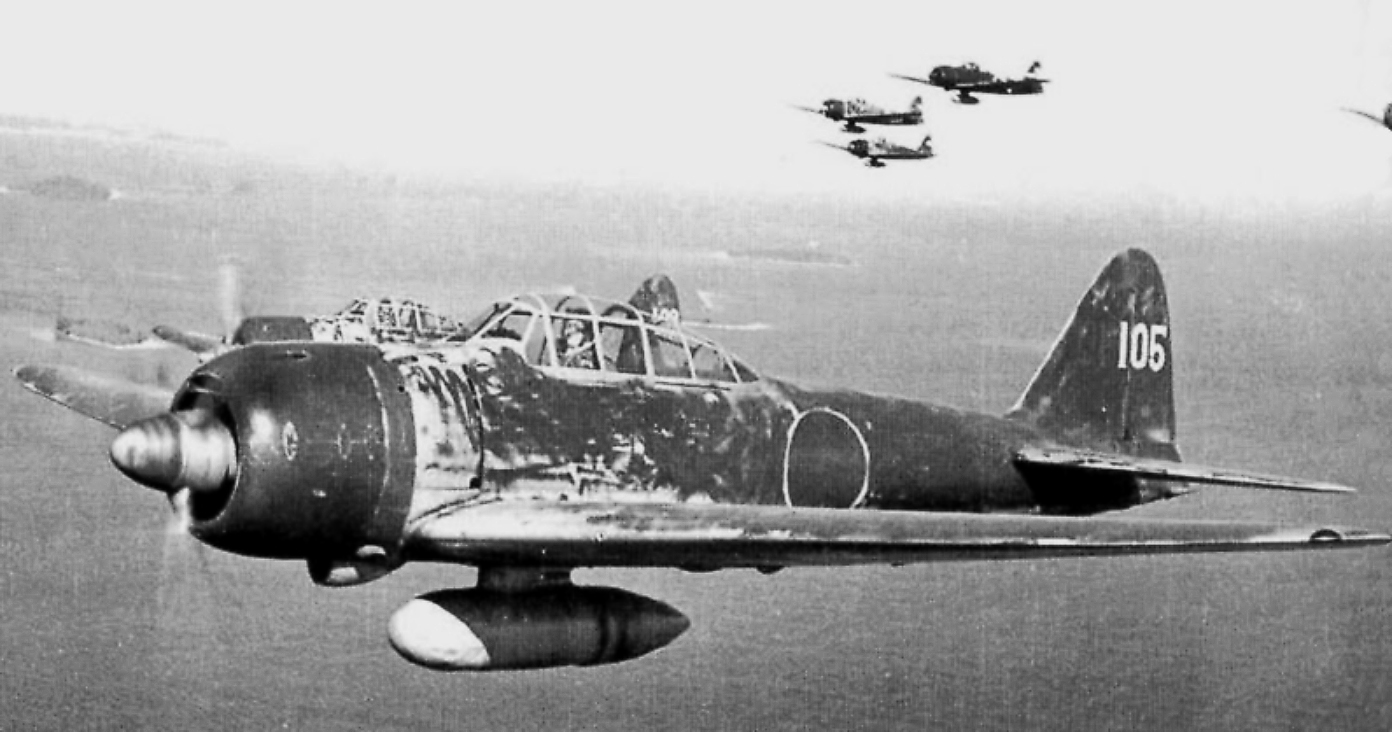Mitsubishi A6M (Zero)

April 1 marked the 85th anniversary of the famous Japanese fighter aircraft Mitsubishi A6M, better known as the Zero. On that day in 1939, the first prototype of the aircraft took off from the Kakamigahara military airfield in Gifu Prefecture. It was developed by Mitsubishi Heavy Industries on the order of the Imperial Japanese Navy, which sought a carrier-based fighter with exceptional performance. The development of the new aircraft was significantly complicated by the fact that the Japanese industry could only offer relatively low-power engines for it. The only way to meet the Navy's requirements was to develop an extremely lightweight aircraft. Designers tackled this daunting task, albeit with some sacrifices. For instance, the fighter lacked cockpit armor and self-sealing fuel tanks, which reduced its combat survivability.
The official full name of the aircraft is "Naval Carrier Fighter Type 00." The nickname "Zero" originated from these two zeros, given to the aircraft by American pilots. Thanks to Western literature and cinema, the name became widely known and entrenched in the aircraft's historiography.
A6M was produced throughout almost the entire duration of the Second World War, with a total of 10,939 units built. There were at least 15 variants of the Zero, with the "Model 21" being among the most common. The aircraft was equipped with a twin-row radial engine with air cooling, the Nakajima NK1C Sakae-12, with a power of 940 hp. The fighter had a length of 9 m, a wingspan of 12 m, an empty weight of 1,680 kg, a maximum takeoff weight of 2,796 kg, a maximum speed of 533 km/h, and a range of over 3100 km. Its armament included two 20mm cannons and two 7.7mm machine guns, with provisions for carrying two 60 kg bombs. Later, for kamikaze attacks, the aircraft were equipped with a single 250 kg bomb.
The Zero first saw combat in September 1940 during the Sino-Japanese War. Its initial adversaries were the Soviet-produced I-15 and I-16 fighters, which were significantly outmatched in terms of combat capabilities. However, from December 1941, the main opponents of the Zero became American aircraft. It quickly became apparent that the primary US Navy carrier-based fighter, the Grumman F4F Wildcat, could hardly compete with the Japanese aircraft. However, the situation changed dramatically with the arrival of new American aircraft, the Grumman F6F Hellcat and Vought F4U Corsair, in the fall of 1943. Fighting against them was extremely difficult for Japanese fighters. The excellent horizontal maneuverability of the Zero no longer saved it, especially considering its low combat survivability.
To this day, at least 25 examples of the Zero have been preserved and are displayed in museums in Japan, the United States, the United Kingdom, China, and other countries.

 Fan-page
Fan-page Youtube
Youtube TikTok
TikTok Aviamuseum
Aviamuseum State Aviation Museum
State Aviation Museum


